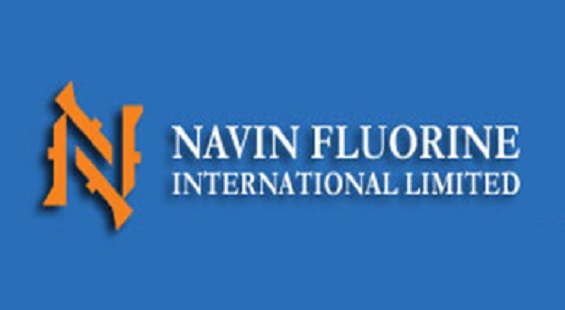Navin had good entry into HPP with multi-year contract of US$410mn spread across 7 years.

Navin Fluorine International (Navin) has been among the best performing specialty chemicals stocks, and rightly so, due to emerging high value businesses. Option-based premium valuation is likely due to strong bounce back in CRAMS business and emerging new businesses in high performance products (HPP) and hexafluoro platform. While CRAMS is shaping well, the past three-year CAGR was just 12%, we would wait to see more consistent performance on which the management seems quite confident. We believe new opportunity based on HPP and hexafluoro may take 3-7years on its own, but with partnership, it can be done in 2-3 years.
Specialty chemicals - can Navin break past trend of under-performing peers? Navin has under-performed peers (SRF/PI) in agrochemical intermediate business in both downcycle (FY16-18) and upcycle (FY18-21). In downcycle Navin benefited from higher mix of pharmaceuticals. The under-performance was due to cautious investment in capex, but it is commencing MPP-2 by FY23 with investment of Rs2bn. Nonetheless, it is far lower compared to peers (SRF investing Rs4-6bn pa). We see Navin being cautious in investing in import substitution products (even in pharmaceuticals) due to uncertainty on Chinese players coming back aggressively. It wishes to tap huge opportunity in high-value products, where growth may be back-ended as it builds capabilities. With MPP-2 on-broad, we have visibility of revenue growth of only <20% CAGR over next four years.
CRAMS – shaping-up well; CRAMS-4 needed for revenue growth beyond FY23. CRAMS revenue has shown good jump in FY21 of 61%, but three-year CAGR is still 11.9% (FY18-21). Divi’s custom synthesis and Syngene revenue grew at CAGRs of 18.5% and 15.4%, respectively, during the same period. However, we are impressed with Navin increasing sourcing of contracts directly from innovators; it has received 25 initial stage product development from the existing customers, which is impressive. We estimate 22.5% CAGR revenue growth in CRAMS over FY21-23E. This means NFIL has to announce CRAMS-4 facility next year to have revenue growth visibility beyond FY23; it already has two large projects under execution.
New businesses – HPP at door-step; much more in backyard. Navin had good entry into HPP with multi-year contract of US$410mn spread across 7 years. Though Navin is incurring capex, the technology platform has come free from innovator. Navin has to expertise in technology over the next few years to scale it for newer products or applications; we are unsure on restriction from the innovator. The first acid test would be the commercialisation of HPP plant, though we assume it should be smooth in co-operation with the innovator. CCVL (JV with Piramal) has also provided knowledge into hexafluoro chemistry platform, which has certain use cases in pharmaceuticals and EV. We believe developing knowledge in new application, scaling new products may take 3-7years organically and 2-3years from partnerships with innovators/users.
Ref-gas – dead-end or HFC/HFO? Navin has presence only in R-22 in ref-gas; it has missed transition to HFC and its partnership with Honeywell for HFO didn’t yield the desired result. Though the company is hopeful on expansion in ref-gas, particularly in domestic market, due to strong brand and distribution network, it did not announce any new capacity. Unlike SRF, it lacks access to proprietary technology and backward integration, which should make economics in ref-gas less lucrative compared to specialty chemicals, CRAMS and new businesses, in our view.
Gross profit margin conundrum. Navin’s gross profit margin in FY14 was 53%. In the past three years, gross profit margin has been in the range of 52-54%. During FY14-21, the contribution of high value business, which includes specialty chemicals and CRAMS, has increased to 65% from 41%. It was disappointing to flattish margin, but the key factor was falling revenues of domestic ref-gas which had much higher gross profit margin. Our back-of-envelop working suggests gross margin dip by 200-250bps from lower ref-gas revenue; adjusted for this as well, the margin is lower than expected for high value business.
Subscribe to our newsletter & stay updated.